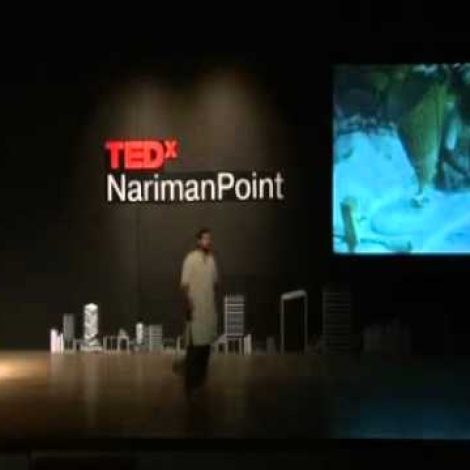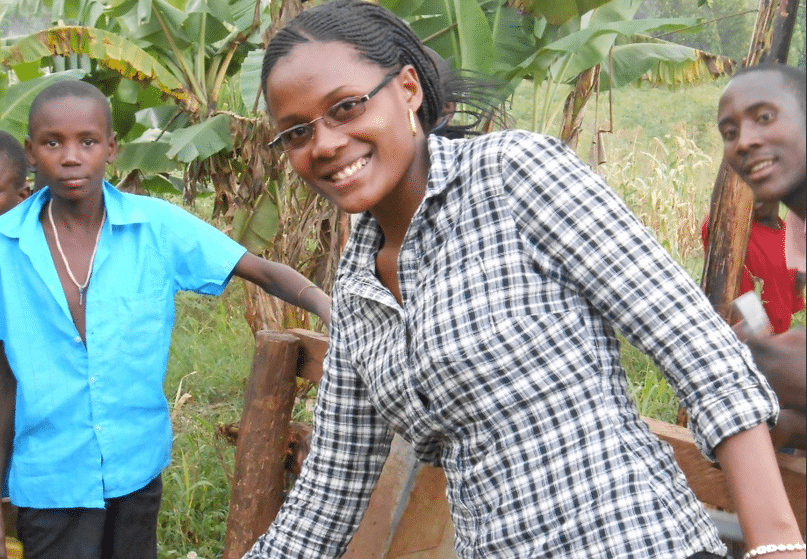Using leading edge, low-cost technology and an important vision, Anand Shah is solving the problem of clean water scarcity in rural India. As CEO of the Piramal Foundation, his company owns and sells rights to the Sarvajal brand of clean water. Sarvajal’s franchisees filter water at the point of sale with 156 rural filtration units that serve more than 85,000 people. The company monitors production, quality and other data at all of its sites in real time, using sensors that send SMS updates. Customers buy clean water in large jugs from their local filtration unit or in whatever smaller quantities they might want at water “ATMs.” (Sarvajal’s chief technical officer Sameer Kalwani explains the technology in this article for Pop!Tech.)
Shah is also a member of the educational organization “Teach for India,” and a member of the think tank tt30, serves on the international board of the social innovation school KaosPilots, and founder of Indicorps, a non-profit incubator of the next generation of global leaders based in India. We asked Shah five questions.
E4C: You don’t have a background in water systems engineering or public health but you’re worried about dirty water. Why water?
AS: Water is fundamental to our existence – arguably more than big-ticket development stories like energy, agriculture, and education. For most of the developed world, water is a non-issue. We don’t spend a large part of our day or mind-share worrying about whether we have enough water to bathe, drink, or live. We “solved” water in the west a long time ago (now we have another problem – of buying bottled water that costs a lot of carbon to transport – even though municipal water systems are generally super safe).
However, water IS a problem for the majority of the developing world. Someone in a poor family spends hours every day dealing with water. People set their schedules around water supply. There are entire industries that exist to create convenience for people out of the colossal and collective mismanagement of water as a resource. This particular disparity – that water is radically more expensive in terms of time, money, and mind-share for the poor – does not make any sense. Getting people clean water is a problem that has been solved in some places, and there is no logical reason that we shouldn’t be able to solve it elsewhere. Seems like a worthwhile exercise.
E4C: In your work with the Piramal Foundation, what promising trends do you see in rural businesses and social entrepreneurship?
AS: It seems obvious that people perceive rural and bottom-of-the-pyramid as potential growth markets, most evident by what I think is a glaring indicator: really talented people with distinguished pedigrees see it as worth their time. While it is exciting to be in the next frontier of growth, I generally think the entire sector is in a state of existential confusion. The vast majority of rural/BOP models have been big-number business plans peddling products designed by the north but for the poor in the south – lanterns, cookstoves, water filters, shampoo sachets, mobile phone chargers, etc.
However, I think looking at this market solely as a product-consumer relationship is fundamentally flawed for the current needs of development. What I think people need first is access to essential services that allow them to spend in ways that are similar to the way people in cities or higher up in the pyramid spend for similar services. This ability to choose and have services will give them sustained access to spending power for the product. Doing services for the poor is HARD, a lot harder than products and distribution. Until we deliver essential services, we will not be able to unlock the potential consumer market.
E4C: What is one of the dead ends that you’ve seen in the development sector that some people just won’t let die?
AS: This is tough. In some ways, I think the entire development sector is designed to sustain things that should be considered “consistent failures.” We are not organized to continuously innovate based on product/service success because there are so few successful “business models” (in the absence of long-term will) that actually pay for revisions. Instead, new ideas are a one-time investment that needs to be pushed as far and deep for as long as possible.
In education, this is most classic in the thought of a textbook. Textbooks in the developing world cost a lot to develop and get used until they are outdated, when they are revised incrementally. In the mean time, the numbers of sources of information around the world have mushroomed, and yet we have not figured out how to really bring that information into the classroom. Almost everything in development works that way. We are not driven by “customers needs” or the inherent drive to develop “best-in-class solutions.” Instead, we are largely driven to propagate ideas. That said, I think this approach to development is changing faster than we think.
E4C: Five years from now, what technological improvements would you like to see in the fields that you work in?
AS: I’d like to see people apply the ideas that drive technology and advancement in the world – the hallways of big companies and great universities or the dorm rooms and incubators where disruptive change is happening – to apply their faculties to the problems that our world should no longer have. Too many people die from things that could be prevented by access to water, sanitation, or electricity.
For example, I’d love to see us think outside the box and use the ever-decreasing cost of technology to build the sensors and web software to evaluate whether the things we do actually work. Can we tell whether beneficiaries use the toilets we build? Could we track it? Could we use the data on who uses facilities when to improve our ability to deliver on the next place? Can we build sensors and filters that ensure water is safe? Can we ensure that it doesn’t dispense if the water is dirty? Can we reduce the burden on large infrastructure to provide for growing populations when distributed services are more plausible? These are all possible if our best and brightest innovate for the masses in the same way that we can build brilliant things for those with privilege (relatively speaking).
E4C: When did you first see that your work is having an impact, and what happened?
AS: I see it all the time. I saw it when I met a farmer in a rural village in Rajasthan who had been to five doctors in three years and tried every possible medical solution to gastrointestinal problems he was facing. He changed to drinking clean water and he no longer had any trouble. He religiously took water from our filters to the farm everyday and stopped drinking water anywhere else. I see in the people that come work with us, learning how to deliver services at the last mile and challenging themselves to find sustained solutions that address the systemic issues that limit adoption of clean water from other sources.

